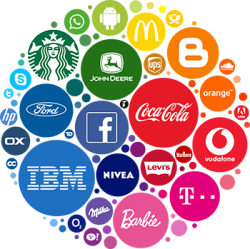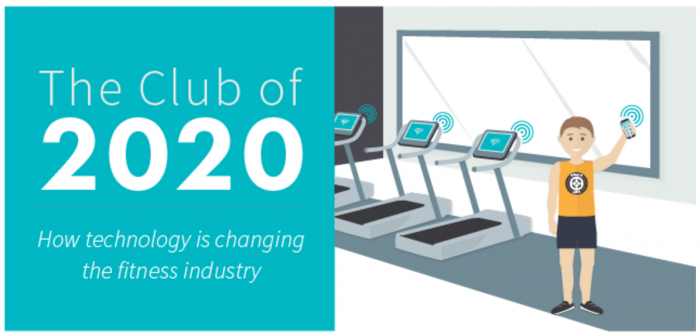 This is article #24 out of 50 in The Startup Marketing Playbook.
This is article #24 out of 50 in The Startup Marketing Playbook.
Brand can be a nebulous concept. It’s an asset and wildly important to the success of most businesses. At the same time, it’s difficult to manage or pinpoint exactly what it is. To keep things simple, brand is a combination of the story and emotion that targets experience when hearing about or interacting with your company. There are tons of resources about the advanced strategies of building a brand, so let’s focus here on tactical steps a startup can take to begin. First, let’s break brand into two parts:
- Visuals
- Voice
The visuals are what targets see when they interact with you: logo, graphics, content, website, advertisements, etc. The voice is what targets read and hear when they interact with you: sales demos, support calls, website copy, ebooks, etc. You need to make sure that both the visuals and voice are in tight alignment if you are creating an organized, cohesive brand. Let’s dig into the specifics:
1. Name
It all starts with the name. I’ve seen startups obsess over this, and the reality is that if the product is exceptional, targets could care less what it’s called. However, you still need to make some smart choices when selecting a name. A good name has something behind it: it’s not just a random combination of words. Most important is its perceived meaning and any additional trust it helps build. Additionally:
- Is it obvious to pronounce and spell?
- Is the domain name available?
- Are matching social media profiles available?
By far the #1 mistake is selecting a name that is too long or too difficult to pronounce and spell. Keep it ridiculously simple. I like to stick to 2 syllables and always drop the “LLC or Inc” from any customer-facing collateral.
2. Graphic identity
A company’s logo is used over and over again on just about every piece of collateral, from the website to social media properties to webinar cover pages to business cards. This identity needs to visually represent the story, emotion and voice you intend to deliver. The best logos are amazingly simple, yet have deep meaning (sometimes hidden). A few examples include:
- Fedex has an arrow pointing forward.
- Baskin Robbins has the number 31, corresponding to the number of flavors they offer.
- Goodwill has a person smiling inside the “g.”
Most startups do not have the resources to use a fancy outside design agency to create a logo. Instead, you rely on your internal design team to explore concepts, collaborate with stakeholders and build the early graphic identity you will use to tell your story from day 1.
3. Aesthetic
The aesthetic is the overall design strategy that you use throughout all of your assets. It is the visual representation of the voice of your brand. You need to carefully consider that strategy so it tightly aligns with how you write and speak. For example, is your style more friendly and comfortable versus more intense and official? Consider Lyft with a friendly pink mustache and Uber with a sleek metallic U.
For my team, we selected an illustrated, friendly and flat aesthetic to demonstrate our product and visually display our content. All of our product screenshots are illustrations, and we use the same friendly designs, digitally hand-drawn, in all of our assets.
4. Color palette
Selecting the right color palette is important; you use those colors over and over again. Most people derive common sense meanings from colors: red as more intense, hot, dangerous versus blue as more calming and cool. What colors best represent your story? Once again, consider Lyft’s pink versus Uber’s black. They have done an excellent job at making the color palette align with the rest of the brand.
As you are selecting colors, it’s important that you understand how color types (RGB vs. CMYK) will print, and ensure that regardless of what medium someone sees your graphics on (print vs. digital), they are seeing the same color that tells the same story.
5. Typography
Like color palette, the fonts that you use across your brand help to create a feeling and tell your story. Your design team puts a ton of thought into the typeface, weight and spacing. Heavier (i.e. thicker) fonts imply bold and aggressive, while thinner fonts imply light, agile and approachable.
6. Voice
Finally, a key aspect of a brand is the consistent voice that is used. When you write content that represents your company, how does it sound? Do you want to position yourself as conservative experts, or relaxed everyday people who are constantly learning? Defining a voice answers these questions and provides alignment across the many touch points a target has with your brand.
Consider creating a persona specifically for the brand’s voice. Give the persona a name and define demographic characteristics. Doing this work makes writing content, delivering support and speaking in sales meetings so much easier.
Next Steps
This post just scratches the surface on building a great brand for a startup. Begin with the simple steps outlined above to build a foundation that can be iterated on as the company grows. The most important thing is having a solid base: an easy-to-pronounce name, a recognizable graphic identity and a voice that resonates with targets.

